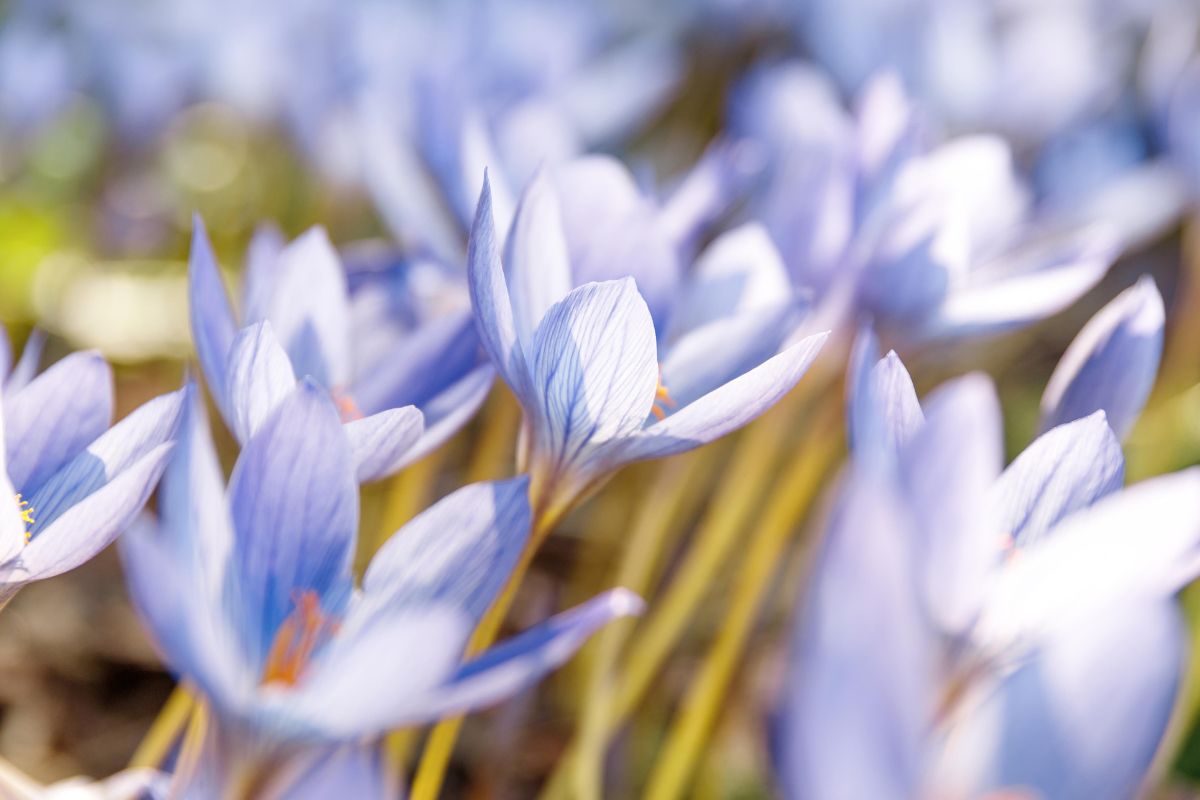
Colchicum & Fall-Flowering Crocus
Did you know you can enjoy the first signs of spring in the fall? Planting colchicum and fall flowering crocus will reward you with beautiful blooms in just weeks. Best of all, each year they return with even more blossoms and require almost no effort on your part at all.
Table of Contents
Colchicum
Colchicum are cormous perennials with dark brown leathery skin that bloom in late summer or fall without any foliage. Their foliage appears in the spring when tulips, daffodils, and crocus bloom. Autumn Crocus, or Meadow Saffron, are other common names for Colchicum.
Their blooms offer a sense of newness to the garden at a time when perennials enter dormancy. They are so easy, simple, and elegant. Grow colchicum in moisture-retentive, humus-rich, and fertile but well-draining soil. Like most other bulbs, these beauties are intolerant of sitting in heavily wet soils. They perform best in sheltered locations where the afternoon sun encourages a succession of blooms. In deep shade, they still flower, but with fewer blossoms.
The bulbs are readily available in late summer at your favourite garden centre. Plant them soon after purchase so that they’ll bloom this season. Set them a depth of 8-10 cm (3-4 in) and space them about 10-15 cm (4-6 in) apart. Use them in woodlands, rock gardens, cottage gardens, containers on the patio, or at the base of roses and shrubs.
You can also bring them indoors where they’ll flower on a windowsill without water or soil. After they finish blooming, plant them outdoors in the garden where the bulbs become dormant through the winter. They are hardy to at least Zone 5. During dormancy, from November to February, apply a top dressing of garden compost or well-rotted manure. Left undisturbed Colchicum naturalize with time. They are generally disease free, but keep an eye out for slugs that can damage blooms and foliage. In spring, allow the foliage to die back naturally as this replenishes the corm for the next season’s bloom.
It’s important to know that all parts of these bulbs are poisonous which is why deer, rabbits, and others leave them alone. Be sure to keep them away from young children who might be tempted to put these candy-like blooms in their mouths.
Colchicum autumnale Album
Colchicum autumnale Album blooms from September to November. Each bulb produces as many as 11 beautiful snow-white flowers. For a dramatic look plant them among the dark and silvery foliage of Heucheras.
Colchicum ‘The Giant’
Colchicum ‘The Giant’ has large crocus-like translucent rosy-pink flowers with a white base. At 20 cm in height, it’s one of the tallest and most free-flowering. Each bulb puts forth 5-10 blooms. Plant these among fall-blooming Asters or the silvery foliage of Artemisia.
Colchicum ‘Waterlily’
Colchicum ‘Waterlily’ bears showy mauve pink double flowers with as many as 20 petals per blossom.
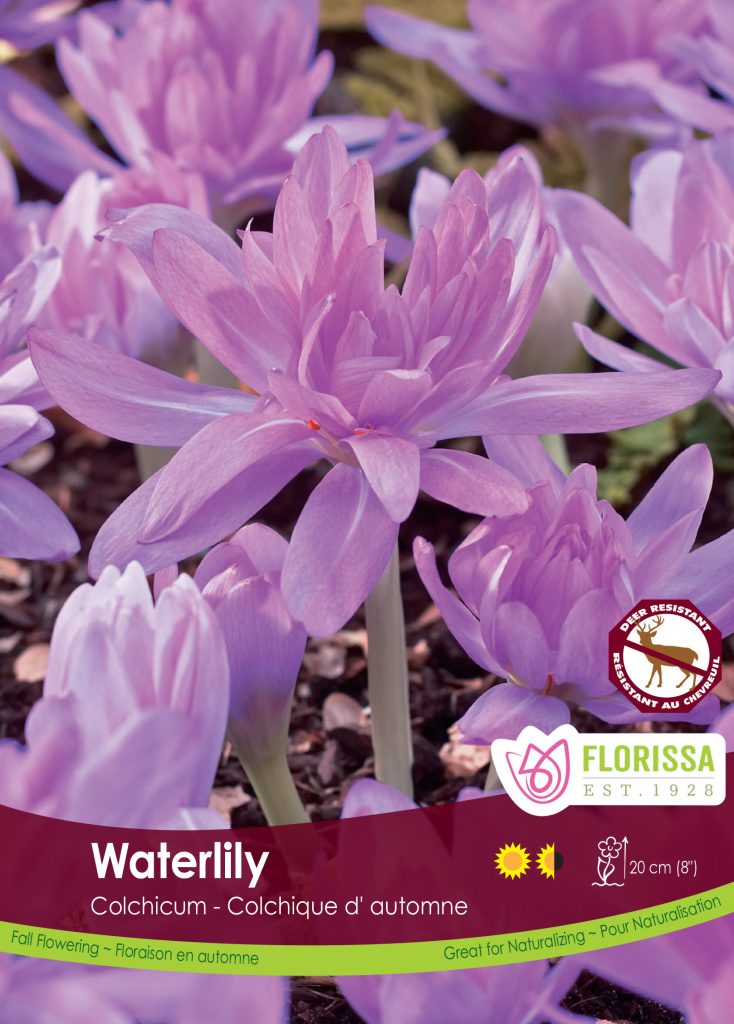
Fall-Flowering Crocus
Don’t let the term “Autumn Crocus” mislead you. It relates specifically to Colchicum. There are several species of crocus that also flower in the fall, but these are known as Autumn or Fall Flowering Crocus. Fall flowering crocus are relatives of the typical spring flowering crocus. Some of these varieties come into flower in September, some as late as December.
You’ll also want to plant these bulbs soon after purchasing them as they’ll begin to bloom almost immediately. Choose a full sun to part shade location with average well-draining soils. If you want to carpet the lawn with fall flowering crocus use a shovel or spade, sliding it under the turf to peel it back and access the ground underneath. Break up the soil and in groupings of 5-8, set the bulbs 5-8 cm (2-3 in) deep, and no more than 8 cm (3 in) apart. For a boost sprinkle some bone meal in the soil. Then replace the loosened turf to cover the bulbs, water them and you’re done. Repeat this process in various sites across the lawn and in no time, the blooms will appear.
Crocus speciosus
Crocus speciosus naturalizes well in the grass as it grows on open hillsides naturally. The breathtaking lavender blue blooms appear from October to November. They are small in the first year of planting and take two years to reach full size. The inner petals are paler and more heavily veined than the outer ones. They are short, 15 cm (6”) in height, and much tougher than they appear. Hardy to Zone 3.
Crocus Sativus
Crocus Sativus is the source of saffron, the world’s most expensive spice. Unlike other crocus, it stays open even on cloudy days. The mauve flowers are veined dark purple and exude a sweet fragrance. Plant Sativus in full sun locations with warm, well-draining ground where it dries out during summer. It is ideal for the rock garden or among low-growing ground covers like creeping thyme. Hardy to Zone 5.
Comments:
Sorry, the comment form is closed at this time.



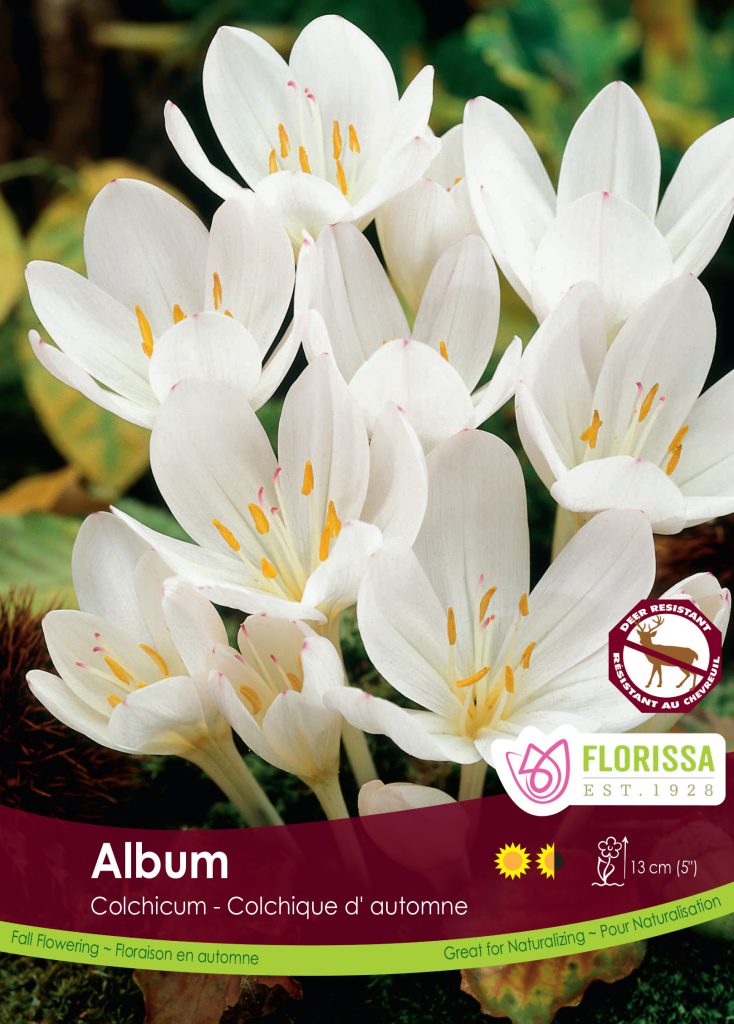

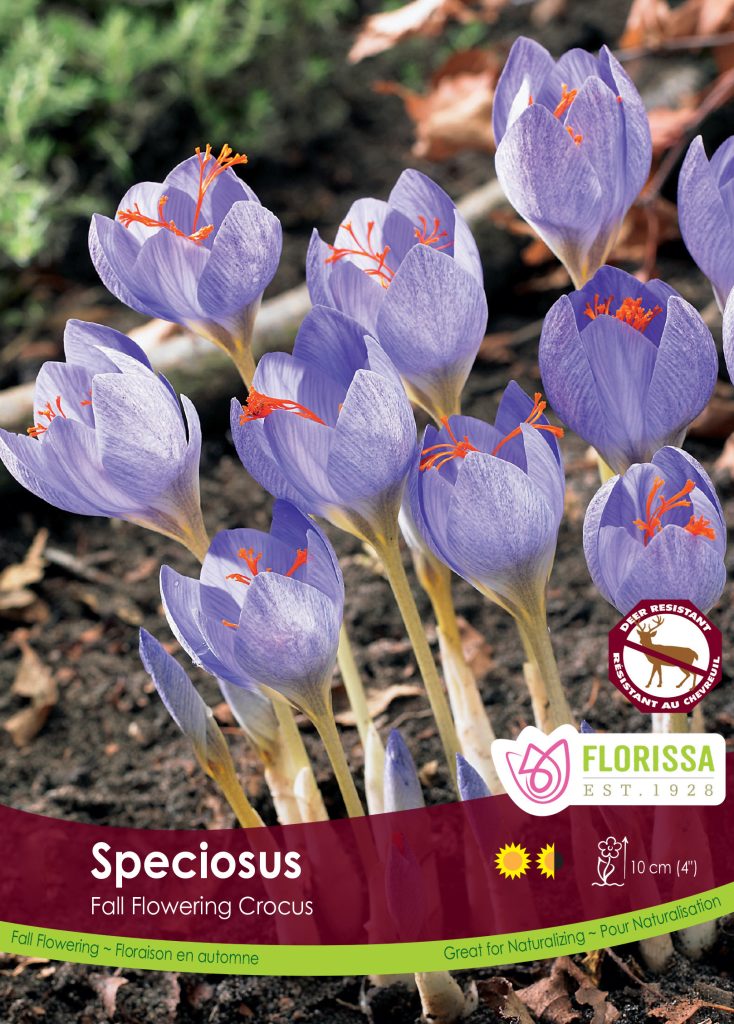
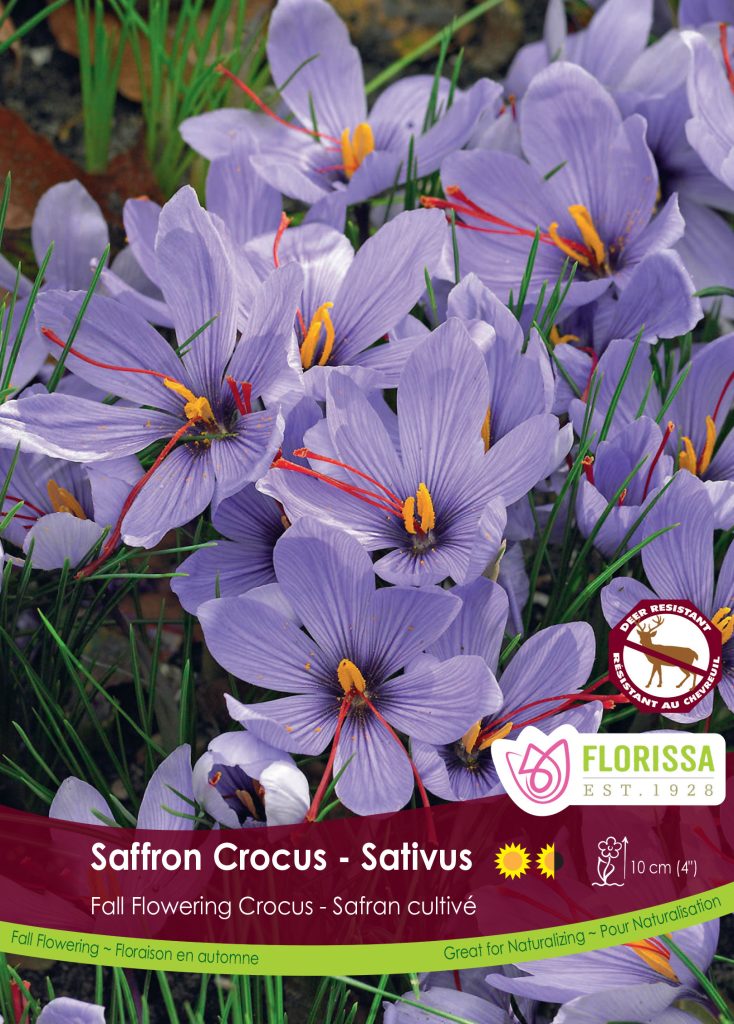

Sarah
I didn’t even think of flowers for fall. Thank you!